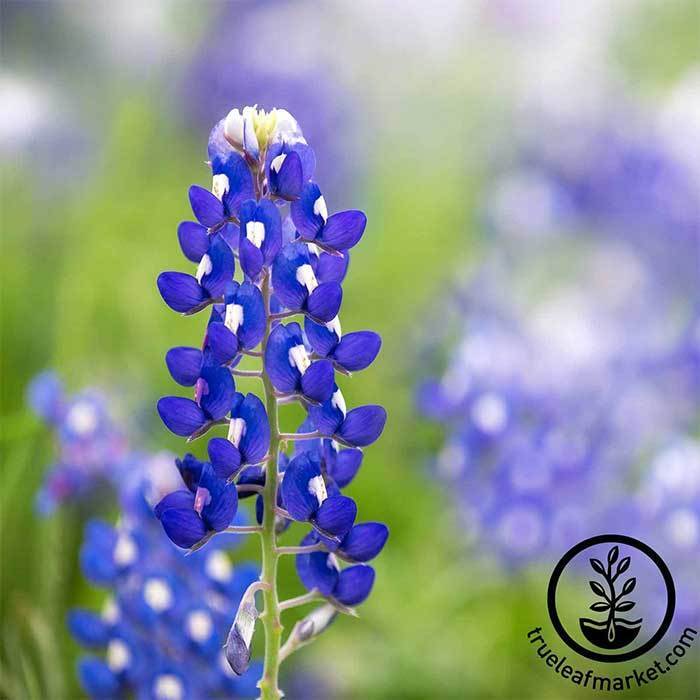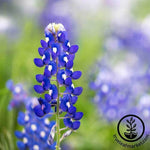
91-98 days. Texas Bluebonnet lupine seeds grow an exclusive all-American favorite that promise to deliver a slice of wild Texas to your garden all season long. Texas Blue Bonnet is native to the rugged woodlands and deserts of Texas and thrives in similar gardens prone to heat, drought, and poor and sandy soils. Texas Blue Bonnet seeds grow compact 8-12" tall lupines bursting with densely-floreted blue and indigo stalks that make for an ideal fit in any fresh cut summertime basket, bouquet, or centerpiece. Texas Bluebonnet lupines are versatile enough to keep either indoors, on the porch, or as a classic American grow among wildflower mixes. 1,4000 seeds/oz










